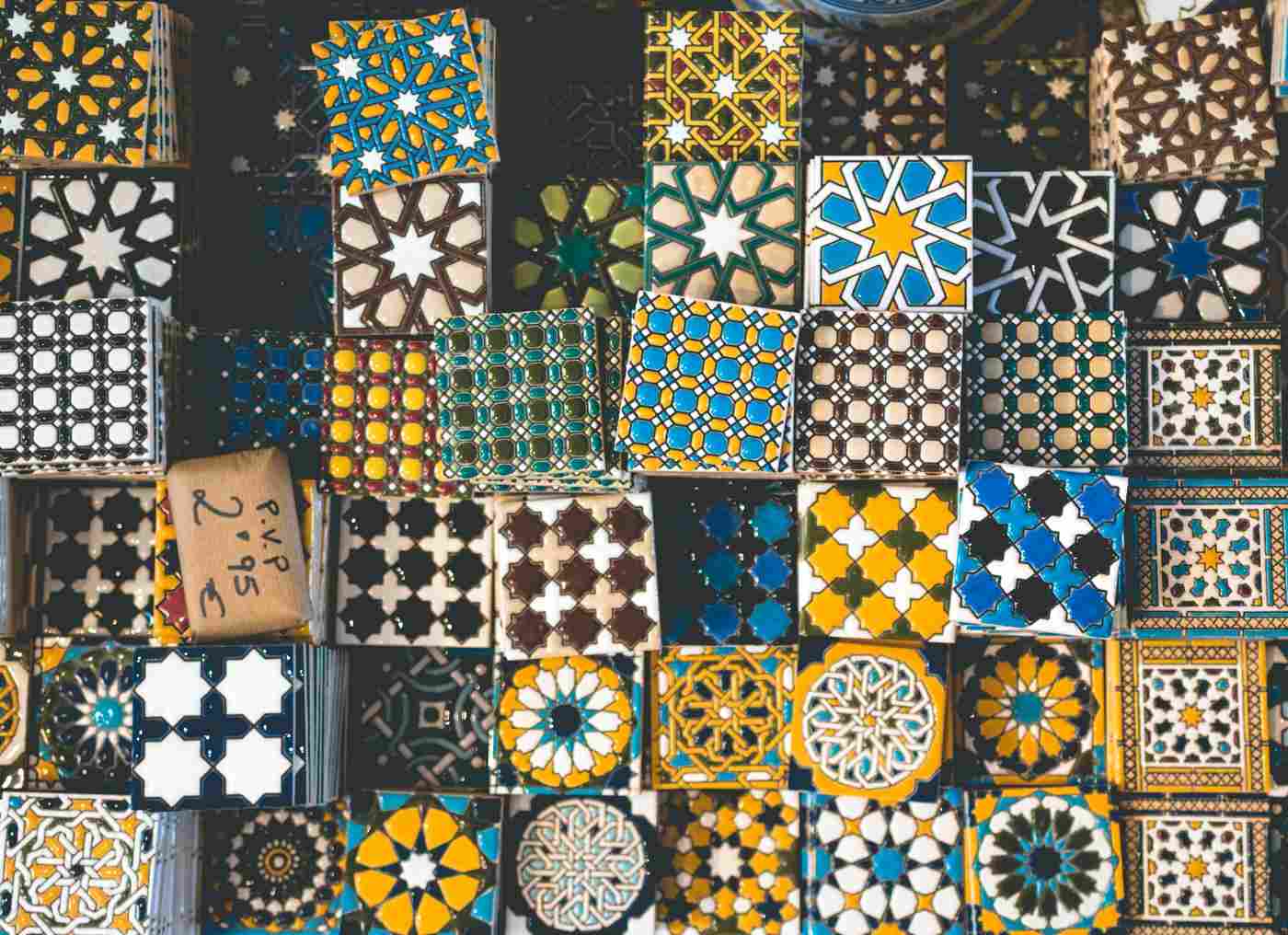How long does it take tile grout to dry? The short answer is 24-72 hours of drying time. It’s a big range because grout drying time depends on external factors like humidity and temperature and type of grout you’re using.
To help you pin down the time frame for your own grout job a bit more specifically, let’s get into the full answer.
Humidity Levels
Humidity just refers to how much moisture is circulating in the air. That moisture level will impact how quickly tile dries, of course. High humidity means slower drying times and low humidity makes for quicker drying times.
This is obvious in the abstract, but it’s sometimes difficult to discern how local humidity levels will impact the exact drying time of your particular tile job. There are some general guidelines that can help you estimate your dry time more accurately, though.
Humid rooms like basements typically dry slower than more arid rooms like entryways. A tile floor in a new bathroom that’s never been used before will dry faster than the same tile floor in a frequently and recently used bathroom that’s being renovated.
Lots of indoor plants in a small place like a bathroom can raise the indoor humidity of that room, too, so factor that into your expectations.
Indoor grout dries faster than outdoor grout, which can take up to 7 days. You’ve undoubtedly guessed that drier climates make grout dry faster than damp areas, so if you’re tiling in southwestern Ontario in July, you can expect to wait an extra long time. Even weather changes like sudden storms can have an impact.
Common Types of Tile Grout

Every grout manufacturer will include drying times in the manufacturer’s instructions on the package. Here’s a ballpark idea of how long common kinds of grout take.
Cementitious Grout
Cement grout is a mixture of sand, cement and a water-retentive additive. That additive makes cement grout easier and more forgiving to work with (since it won’t immediately harden on you), but it does take longer to dry—up to the full 72 hours. For a bathroom, it also requires a penetrating sealer to repel water, stains and mildew, which adds to your total renovation time.
There are a few different kinds of cementitious grout. In general, though, the following types of grout will have similar dry times:
Unsanded grout uses polymers instead of sand, so the particles are so fine they’re not visible. This type of grout feels very smooth and is commonly used on wall tiles and as a shower grout. The Home Depot offers this pro tip: only use it for grout joints between 1/6-inch to 1/8-inch because it’s prone to cracking.
Sanded grout contains larger particles of sand and has a sand-like texture that you can see and feel. The texture runs from finely sanded grout to a coarser quarry-type grout. This is a general-purpose grout for wall and floor tiles and is good on areas with high foot traffic.
It’s used for tiles with a grout line wider than 1/8 inch. The sand prevents weak joints in these larger spaces, but as the Home Depot advises, can’t be used in narrow seams because the sand particles are too large to allow for strong bonding.
Epoxy Grout
Epoxy grout is made of epoxy resin, as well as a hardener. It has a high bonding strength. This kind of grout is less porous than cementitious grout, so it’s waterproof and resists stains. It’s most commonly used on shower surrounds, countertops and backsplashes.
It has a fast drying time, coming in at 24 hours. It also doesn’t need a grout sealer, shortening up your reno time so you could, in theory, have your project done the next day.
Furan Grout
Furan resin grout is made with furfuryl alcohol polymers and, like epoxy grout, does not require water. It’s highly resistant to chemicals and stains, but because it’s difficult to apply, is a better choice for industrial settings. Average drying time is 24 hours.
Regardless of the type of grout you use, be conservative in your estimates, especially if the grout is drying in a humid environment. For best results, treat the package’s instructions as the minimum amount of time to let the grout dry. It’s better to leave grout drying too long than to cut the drying process short.
What’s the Difference Between Dry Time and Cure Time?
Dry time is exactly what it sounds like—the time it takes for the grout to feel dry. Just because it feels dry, however, doesn’t mean it’s properly cured, and that’s really what you’re going for.
Curing is a process in which materials like epoxies and other polymers or cement change on a molecular level and form adhesive bonds or achieve structural strength. Lots of materials need to cure when you’re doing a tile job: whatever tile adhesive, quick-setting mortar or thinset mortar you use likewise needs time to cure before you grout.
As grout cures, a chemical reaction takes place in which the cement present in cementitious grout bonds with water in a process called hydration. Hydration causes calcium silica hydrate crystals to grow, which twine around the sand (and each other) and form the hard, durable substance that we need grout to be.
The chemistry actually starts even before you apply the grout. You’ve probably noticed that the instructions for different grout mixes will include giving the grout a 10-minute rest after you’ve mixed it. That rest is actually an important step called “slaking.”
Each of the components of tile grout needs to be wet, and since each component absorbs water at a different rate, that small rest assures that all the ingredients have soaked in the water they need. Then all the ingredients will adhere together, with no air bubbles, and form stronger bonds.
Once applied, it takes some time for the crystals to grow and ensure the grout bonds properly. Cut that curing process short, and you run into structural problems.
Why Is It So Important for Fresh Grout to Dry Fully Before Sealing It?

To cure properly, grout needs the right amount of water and enough time to dry slowly and evenly. This is why cementitious grout formulas generally include a water-retentive additive—it creates more ideal conditions for grout by keeping the grout from drying too quickly.
Grout that dries too quickly will be soft and absorb water, ultimately leading to crumbling. So a long grout drying time is the best way for the material to mature so it can perform well.
It’s equally important for the tile not to get soaked before it’s fully cured, though. If you’re installing natural stone tiles on a patio and it pours rain on your wet grout, for instance, that excess moisture will become a problem because a) the drops of water could create water damage and b) it will weaken the grout by adding too much moisture.
Grout with too much water will shrink as it dries because it will lose volume as the excess water evaporates. In drying, the grout will peel away from the tiles, causing cracking and chipping.
That’s why pros recommend using a damp sponge to remove excess grout and grout haze from the tile surface as you’re working—a soaking wet sponge can add too much water to the mix.
(How) Can You Speed up the Drying Time of Grout?
There’s really no substitute for patience. But if you’re trying to get the work done on a tight schedule, you can try to remove excess humidity from the area you’re tiling and see if that helps. You can run a dehumidifier, an air conditioner or an electric fan to help keep humidity levels low as the grout dries.
Even a small fan might make a difference in a very humid area, but it’s not going to shorten the minimum advertised drying time. Nor do you want it to, if you want your grout to last. You’ve already invested your hard work and cash—you might as well take the extra time to let the grout set so your new tile project can look and perform its best.
Feature image: James McDonald; Image 1: cottonbro; Image 2: Job Savelsberg


